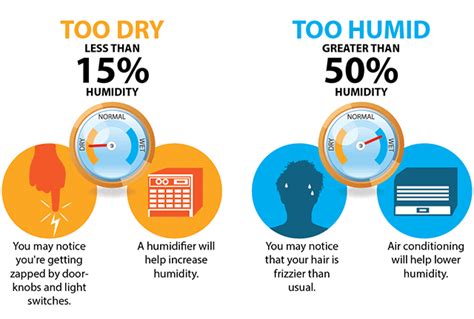Essential Guide to Winter Humidity Control
Winter's dry air can wreak havoc on your health and home. From dry, itchy skin and chapped lips to static electricity shocks and damaged wood furniture, low humidity is a common winter woe. This comprehensive guide will walk you through understanding why winter air gets so dry, the negative effects of low humidity, and most importantly, how to effectively control it. We’ll explore various humidity control methods, helping you choose the best solution for your needs and budget.
Why Does Winter Air Get So Dry?
The culprit behind winter's dry air is the cold temperature. Cold air simply cannot hold as much moisture as warm air. As the outside temperature drops, the relative humidity – the amount of moisture in the air compared to how much it can hold – plummets. Heating systems further exacerbate the problem. Forced-air furnaces, in particular, draw in already dry outside air and heat it, making it even drier. This heated, dry air then circulates throughout your home, sucking moisture out of everything in its path.
What Are the Negative Effects of Low Humidity?
Low humidity isn't just an uncomfortable nuisance; it can have significant consequences for your health and your belongings:
- Health Issues: Dry air can irritate your respiratory system, leading to dry coughs, sore throats, nosebleeds, and exacerbate conditions like asthma and allergies. Dry skin and eyes are also common complaints.
- Home Damage: Low humidity can cause wood furniture to crack and split, and can damage musical instruments. It can also lead to static electricity buildup, which can damage electronics and be quite annoying.
- Discomfort: Dry air contributes to feelings of dryness, irritation, and discomfort, making you feel less comfortable in your own home.
How to Increase Humidity in Your Home: A Comprehensive Guide
Several effective methods can help you combat dry winter air. Here's a breakdown of popular options:
1. Humidifiers:
Humidifiers are the most direct way to add moisture to the air. They come in various types:
- Cool-mist humidifiers: These are generally safer and quieter than warm-mist models. They add moisture to the air through evaporation.
- Warm-mist humidifiers: These work faster and can cover a larger area but carry a slightly higher risk of burns.
- Ultrasonic humidifiers: These use high-frequency vibrations to create a fine mist. They are relatively quiet and energy-efficient.
Choosing the Right Humidifier: Consider the size of the room you need to humidify and the type of humidifier that best suits your needs and budget. Regular cleaning is crucial to prevent the growth of mold and mildew.
2. Houseplants:
While not a primary solution, houseplants can contribute slightly to increasing humidity. Plants release moisture into the air through transpiration. Grouping several plants together can have a more noticeable effect.
3. Boiling Water:
A simple and quick fix for a small room is to boil a pot of water on the stove. The steam released will temporarily increase humidity. However, this is not a long-term solution.
4. Open Containers of Water:
Placing bowls or containers of water near radiators or heat sources can help add some moisture to the air. However, the effect is minimal compared to humidifiers.
5. Maintaining Indoor Plants:
Keeping indoor plants well-watered also helps to introduce moisture into the air.
What is the Ideal Humidity Level for My Home?
The ideal indoor humidity level is typically between 30% and 50%. Using a hygrometer, a device that measures humidity, is essential to monitor your home's humidity levels and ensure you're maintaining a comfortable and healthy environment.
How Often Should I Clean My Humidifier?
Cleaning your humidifier regularly is crucial to prevent mold and mildew growth. Follow the manufacturer's instructions, but generally, you should clean your humidifier at least once a week, or more frequently if you notice any signs of mold or mineral buildup.
What are some natural ways to add humidity to my home?
While humidifiers are the most effective, natural ways to add some humidity include placing bowls of water near heat sources, and keeping indoor plants well-watered. These methods provide only a minimal increase in humidity.
How can I prevent dry skin in winter?
Maintaining adequate humidity levels in your home is crucial. Additionally, using a humidifier, drinking plenty of water, and using a moisturizer are effective ways to combat dry skin during the winter months.
This comprehensive guide provides you with the knowledge and tools to effectively control humidity in your home this winter, ensuring a healthier and more comfortable living environment for you and your family. Remember to regularly monitor humidity levels and clean your humidifier to maintain optimal conditions.

